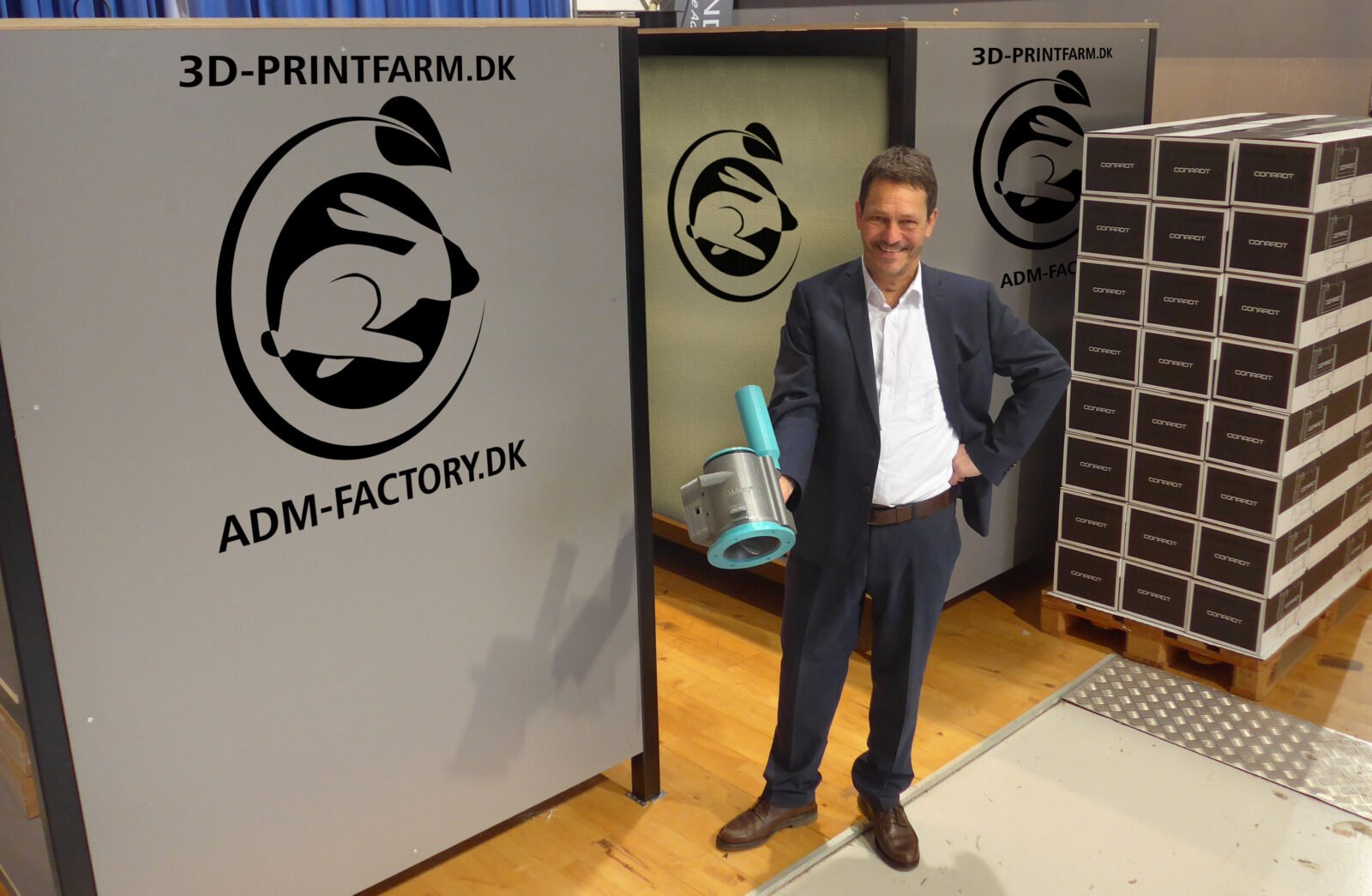A 3D-printed mini vacuum conveyor used to add colours in the production of plastics has grown from an idea sitting in a desk drawer to a potential international success for the company Andertech. Plougmann Vingtoft was responsible for the Danish and international patenting.
When CEO at Andertech Erik Sten Andersen first met with Plougmann Vingtoft in May 2018, he knew he was bringing a good idea to the table. An idea that was probably so good that a patent application had to be launched immediately.
Patent attorney Per Nygreen, partner at Plougmann Vingtoft – one of Scandinavia’s leading consultancies in the field of IP rights – fully agreed:
“It clearly must be patented, as there is great risk of the idea being copied,” Per Nygreen said when the idea was described to him.
Therefore, the meeting resulted in Per Nygreen starting to prepare a Danish patent application, and in October 2018, Erik Sten Andersen received the letter of approval of his idea from the Danish Patent and Trademark Office.
It clearly must be patented, as there is great risk of the idea being copied
Per Nygreen, Patent Attorney at Plougmann Vingtoft
“Patenting costs grow depending on the number of countries in which you want to patent your product. That’s why it’s a good idea to start by filing and receiving a Danish or other local European patent, and 12 months after filing in your home country, obtain another 18 months before considering to embark on a large-scale international patenting process. For the most part, 30 months is sufficient time to test the product on the relevant markets, after which time you are much better equipped to decide in which countries to apply for a patent. If, during the 30 months, you come up against unexpected barriers in the market, the cost of patenting can be kept at a relatively limited level,” explains Per Nygreen.
The idea from the desk drawer
The good idea from the man who founded Andertech back in 1984 with a focus on supplying equipment and machinery to the plastics industry, is a hopper loader – or as Erik Sten Andersen prefers to call it: a mini vacuum conveyor.
“You can compare it to a small vacuum cleaner that sucks up plastics colouring granules via a hose. Electronically controlled, the colour granules exit the other end in small batches ready to be mixed with the raw plastics materials, for example film, gutters or Lego bricks. The vacuum conveyor weighs only 1,200 grams and can suck up over 100 kilos per hour. This is a universal vacuum conveyor, which is useful for anyone processing plastics,” says Erik Sten Andersen.

The idea was not a new one. In fact, it had been sitting in Erik Sten Andersen’s desk drawer in Humlebæk for years before he dusted it off in the wake of Andertech’s sweeping digitisation in 2011. As a result of the digitisation, Andertech now houses Denmark’s largest 3D printing farm consisting of 60 3D printers, and it was with the help of the 3D printing technology that it became possible to turn the idea in the desk drawer into a commercial product.
Protected in more than 40 countries
Erik Sten Andersen has no doubts about the potential of the vacuum conveyor. Currently, it is produced in series of 1,000 units, and from early 2021 it can be purchased via Amazon in Germany.
It is extremely important to patent your inventions, because 3D printers provide the technology to quickly make copies if you are skilled at it.
Erik Sten Andersen, CEO at Andertech
Erik Sten Andersen’s idea is pending patents protecting it from copying in more than 40 countries with a combined population of approximately four billion inhabitants – including the United States, China and India. During the process, Erik Sten Andersen has had many conversations with Per Nygreen about strategic choices in terms of geographical coverage.
“If we had enough money, we would probably have patented the idea in all 152 countries,” says Erik Sten Andersen, explaining the strategic work of selecting countries:
“For example, we have chosen to patent the product in both China and India, but in return, we have opted out of countries such as Australia, New Zealand, South Korea and Japan. Should someone in Australia buy a 3D printer and attempt to copy my invention, it might be sold in Australia, but because of my patent, the copy will not be marketable in China, India or the United States,” says Erik Sten Andersen.
The 3D printing technology has made Erik Sten Andersen very aware of how important it is to be on firm ground, patenting-wise.
“It is extremely important to patent your inventions, because 3D printers provide the technology to quickly make copies if you are skilled at it. 3D printing technology is growing explosively as new types of 3D printers are invented every week around the world. And within the plastics industry, I have seen many examples of exact copies of products because the patents were not in order,” says Erik Sten Andersen.
This article was originally published in Business Insights..